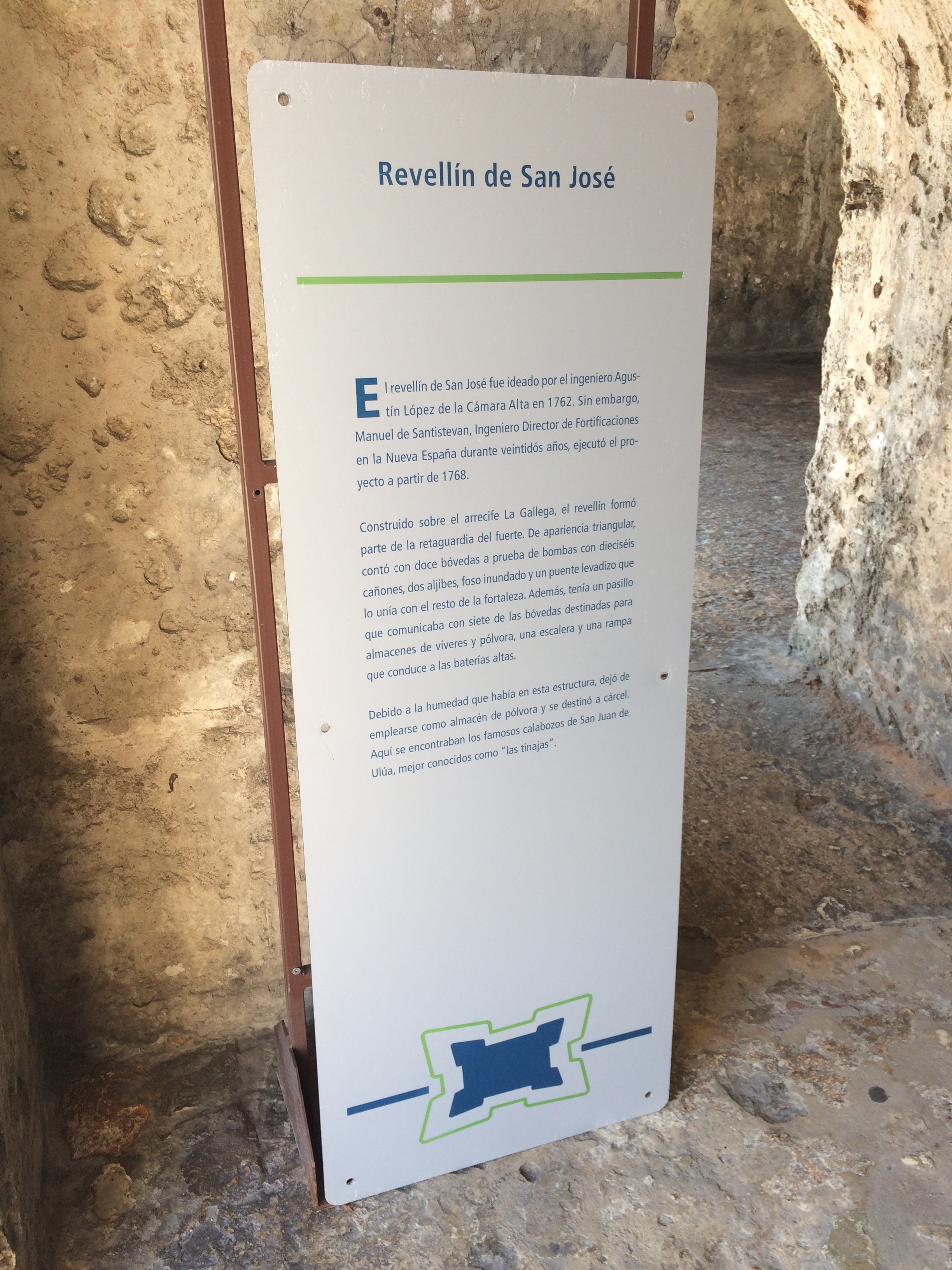Photograph as originally submitted to
this page in the Historical Marker Database
www.HMdb.org.
Click on photo to resize in browser. Scroll down to see metadata.
Photographer: J. Makali Bruton
Taken: March 23, 2017
Caption:
An additional nearby marker on the Revelin of San José | Additional Description:
Revellín de San José
El revellín de San José fue ideado por el ingeniero Agustín López de la Cámara Alta en 1762. Sin embargo, Manuel de Santistevan, Ingeniero Director de Fortificaciones
en la Nueva España durante veintidós años, ejecutó el proyecto a partir de 1768.
Construido sobre el arrecife La Gallega, el revellín formó
parte de la retaguardia del fuerte. De apariencia triangular, contó con doce bóvedas a prueba de bombas con dieciséis cañones, dos aljibes, foso inundado y un puente levadizo que lo unía con el resto de la fortaleza. Además, tenía un pasillo que comunicaba con siete de las bóvedas destinadas para almacenes de víveres y pólvora, una escalera y
una rampa que conduce a las baterías altas.
Debido a la humedad que había en esta estructura, dejó de emplearse como almacén de pólvora y se destinó a cárcel. Aquí se encontraban los famosos calabozos de San Juan de Ulúa, mejor conocidos como "las tinajas”.
English translation:The Revelin of San José The Revelin de San José was first proposed by the engineer Agustín López de la Cámara Alta in 1762. However, it was Manuel de Santistevan, Engineer Director of Fortifications for New Spain for twenty-two years, who finally executed the project starting in 1768.
The Revelin was built on a reef originally known as La Gallega. It was formed as part of the rear of the fort. Triangular in appearance, it had twelve bomb-proof vaults with sixteen guns, two wells, a moat that could be flooded and a drawbridge linking it with the rest of the fort. In addition, it had a corridor that communicated with seven of the vaults that were destined for the storage of provisions and gunpowder, a staircase and a ramp leading to the artillery batteries.
Due to the humidity in this structure, it stopped being used as a storage area for gunpowder and was turned into a jail. Here were the famous dungeons of San Juan de Ulúa, better known as "las tinajas", or “the water jugs”, because of their humidity.
Submitted: June 11, 2017, by J. Makali Bruton of Accra, Ghana.
Database Locator Identification Number: p385314
File Size: 2.371 Megabytes
To see the metadata that may be embedded in this photo, sign in and then return to this page.
